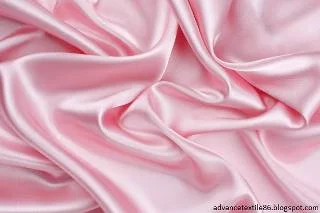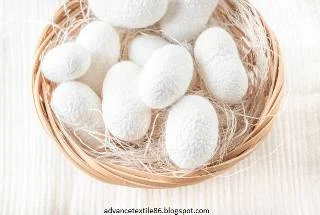Silk
Silk
is a natural protein fiber, and some of its forms can be woven into textiles. The
silk protein fiber is composed primarily of fibroin and some insect larvae are
found in cocoons, the most well-known of the silk captive mulberry silkworm
bombyx Mori larvae found in cocoons. The shiny appearance of silk is due to the
triangular prism structure of silk fiber, which allows the silk fabric to
reflect the light coming from different angles, thus producing different
colors. Different silks are mulberry silk, wild silk, sea silk, raw silk, etc.
History of silk
The
history of silk is much earlier. Silk
production originated in China in the Neolithic era. Silk manufacturing was
restricted to China until the Silk Road opened at one stage during the last
half of the first millennium BC, where China maintained a virtual monopoly on
silk production for another thousand years. Without limiting the use of
clothing, the use of silk was for many applications within China; the color of
worn silk also carries social significance and forms an important guide to
social class during the Tang Dynasty.
Silk
cultivation spread to Japan around 300 AD and by 552 AD the Byzantine Empire
was able to get silkworm eggs and start silkworm farming; The Arabs also
started producing silk at the same time. As a result of the expansion of
sericulture, Chinese silk exports became less important, although they still
dominated the luxury silk market. The Crusades brought silk production to
Western Europe, especially some Italian states, which saw an economic blast in
exporting silk to the rest of Europe. Also began during the Middle Ages in
Europe, the development of the manufacturing process, with devices like
spinning wheels, first appearing at this time. In the sixteenth century, France
joined Italy in developing a successful silk trade, although other countries
efforts to develop their own silk industry failed.
The early history of silk
The early record history of silk was found at the Yangshao Culture Places in Xiaochi's Xia County, where a silk cocoon between 4000 and 3000 BC was found cut in half with a sharp knife. The species is identified as the pet silkworm Bombyx mori. Primitive weaving pieces can also be seen in the Hemudu culture sites in Yuyao, Hiang, around 4,000 BC.
The first example of woven silk fabric is from 3630 BC and it was used as a baby
body wrapper. The fabric comes from a Yangshao site in Qingtaikun, Rongyang,
Henan. Silk scraps were found in a Liangzhou culture site in Qianshanyanyang,
Huzhou, Zhejiang, in 20,000 BC. Other fragments have been recovered from the
tombs of the Shang dynasty.
The silk of ancient and Medieval China
In China, silkworm farming was largely confined to women and many women were
engaged in the silk-making industry. Although some saw the development of
luxury goods as useless, the Silk aroused curiosity in high society that Li
G's rules were used to limit its use to members of the imperial family.
For
nearly a millennium, the right to wear silk was reserved for the emperor and
the highest echelons. Silk was, at that time, a symbol of abundant wealth, due
to its shiny appearance, created by the primitive structure of silk fiber,
which removed the light from every angle. After some time, silk gradually
spread to other classes of Chinese society, although it was originally the
highest aristocratic class. Silk began to be used in decorative ways and in
less luxurious ways: all used silk for making musical instruments, fishing, and
bows. Farmers, however, did not have the right to wear silk until the Qing
Dynasty (1644–1911).
During
the Han Dynasty, silk became increasingly valuable in its own right and more
than just any material. It was used to pay government officials and to
compensate particularly deserving citizens. In the same way that one can
sometimes determine the price of a product according to a certain weight of
gold, the length of the silk cloth became a coin standard in China. The wealth
that silk brought to China provoked violence in neighboring countries; at the
beginning of the second century BC, Zionganu regularly pelted the provinces of
Han China with stone for about 250 years. Silk was a common gift from the
emperor to this tribe in exchange for peace.
History of silk in Europe and Asia
Although
silk was well-known in most parts of Europe and Asia, China was able to keep
the closest monopoly in silk production. Defended by the decree of the monopoly
empire, anyone who tried to export silkworms or their eggs was condemned to
death. Around 300 AD, a Japanese expedition succeeded in capturing some
silkworm eggs and four Chinese maidens, who were forced to teach their captives
the art of sericulture. Later, between the 8th and 9th centuries, large-scale
silk cultivation techniques were introduced in Japan through frequent
diplomatic exchanges.
Beginning
in the fourth century BC, silk began to reach the Hellenistic world with
merchants who exchanged gold, ivory, horses, or precious stones. As far as the
borders of the Roman Empire, silk became a monetary standard for pricing
various products. Hellenistic Greece admired the high quality of Chinese
products and tried to plant mulberry trees and silkworms in the Mediterranean
basin. Sassanid Persia controlled the silk trade scheduled for Europe and
Byzantium. The Greek word for "silken" was derived from the name of
Seres, according to Strabo, from whom silk was first obtained. Greek term gives
birth to the Latin Sericum and finally the Old English Sioloc, Middle English
Silk.
Italian
silk fabrics were very expensive, a consequence of the cost of raw materials as
production costs. Italian artisans proved incapable of capturing the
intricacies of French fashion, which constantly demanded lighter and less
expensive materials. These materials were used for clothing and garments
production began locally. Nevertheless, Italian silk remains among the
brightest colors of the longest decorated, most upholstered materials and dyes.
Following
the example of the wealthy Italian city-states of the time, like Venice,
Florence, and Lusca, which became the center of the luxury-textile industry,
Lyon achieved a similar event in the French market. In 1466, King Louis XI
decided to develop a national silk industry in Lyon and called in large numbers
of Italian workers, mainly from Calabria. The fame of the master weavers of
Catanzaro spread throughout France, and they were invited to Lyon to teach
weaving techniques. The drum that was seen in France in those years is called the Jean Le Calabrais loom.
History of silk in modern times
After
the crisis in Europe, the modernization of Sericulture in Japan has made it the
top silk producer in the world. By the early twentieth century, rapidly
industrialized Japan was producing more than 60 percent of the world's raw
silk, with most exports shipping through the port of Yokohama. Italy managed to
recover from the crisis, but France was unable. Urbanization in Europe has seen
many French and Italian farmers abandon silk for more lucrative factory work.
Raw silk was imported to fill the void in Japan. Asian countries, which were
former exporters of raw materials, gradually started exporting more and more
readymade garments.
During World War II, the supply of silk from Japan was cut off, forcing Western
countries to look for alternatives. Synthetic fibers such as nylon were used in
products such as parachutes and stockings, instead of silk. Even after the war,
many of the lost silk markets were not able to regain them, although it was an
expensive luxury product. The importance of synthetic fibers and the slackening
of the conservative economy contributed to the collapse of the Japanese silk
industry, and by 1975 it was no longer a net exporter of silk. In December
2006, the UN General Assembly declared 2009 the International Year of Natural
Fibers to enhance the profile of silk and other natural fibers.













0 Comments